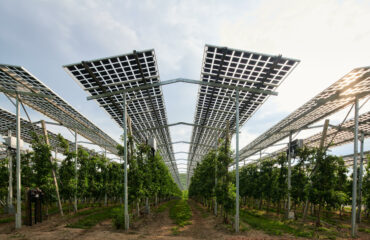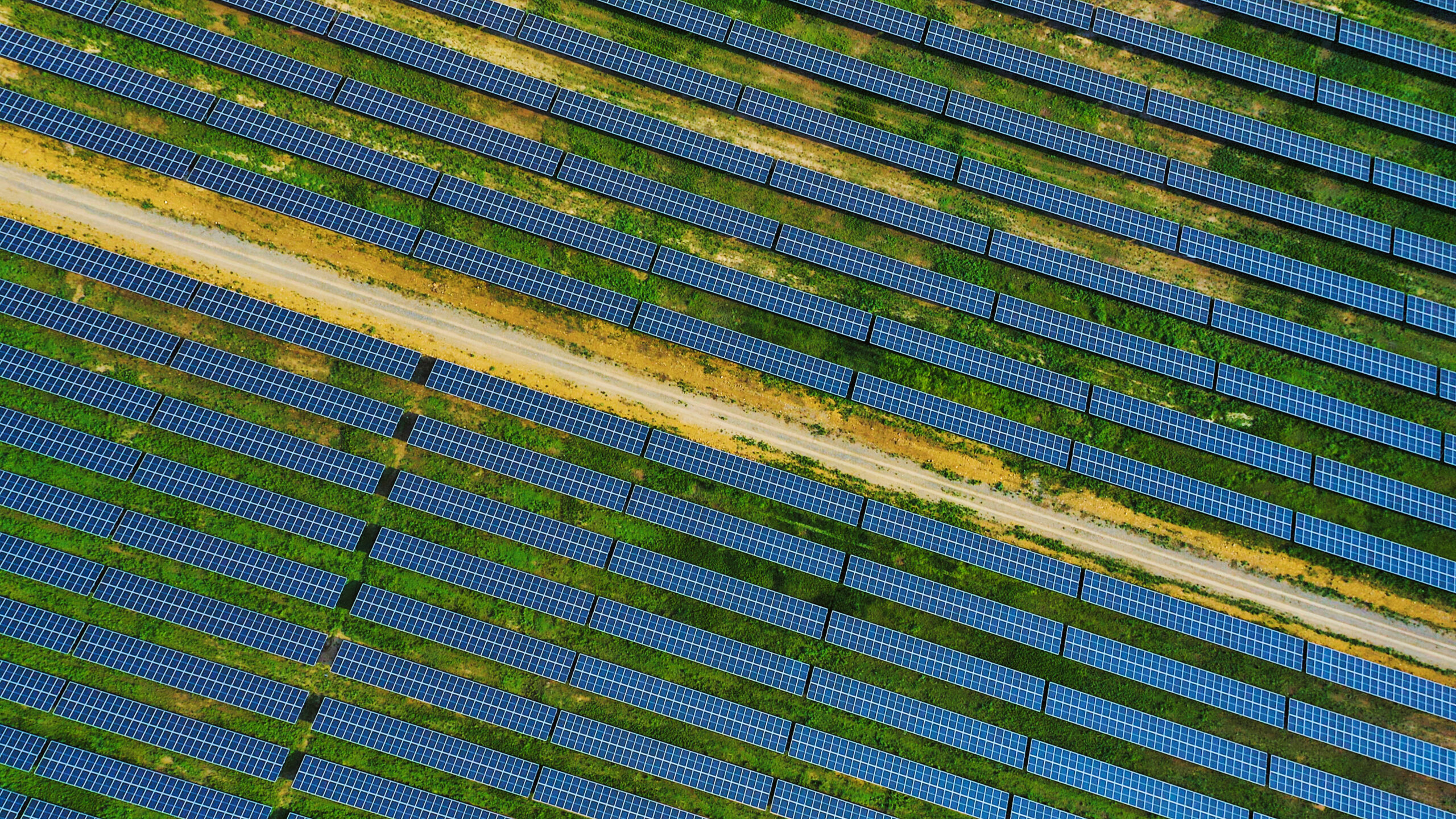
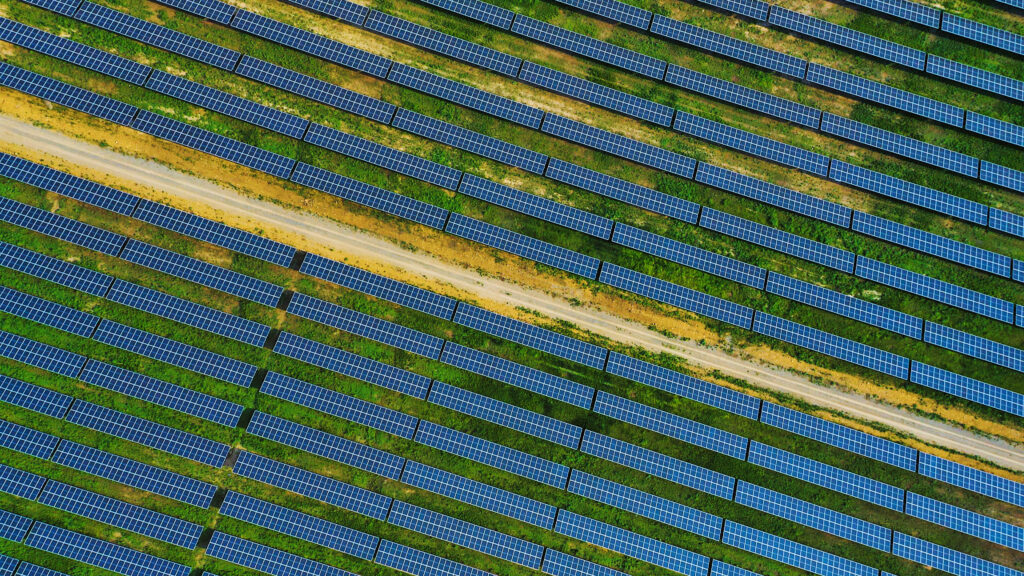
Solar Package 1: Overview Of The Main New Solar Regulation In Germany
The waiting has come to an end.
After the German Federal Government adopted the first draft of the Solar Package 1 in August 2023 and a small selected part of Solar Package 1 already entered into force in December 2023, the German Parliament and the German Federal Council have now adopted the remaining (main) part of Solar Package 1. The Solar Package 1, which was significantly amended during the legislative process, contains a number of new regulations for solar energy in Germany, particularly in the Renewable Energy Sources Act (Erneuerbare-Energien-Gesetz – “EEG”) and in the Energy Industry Act (Energiewirtschaftsgesetz – “EnWG”). These new regulations are intended to facilitate and accelerate the expansion of solar energy in Germany and contain numerous changes for both ground-mounted and rooftop PV plants. In addition to solar-related provisions, the Solar Package I also contains new regulations for the acceleration of grid connections, and the operation of electricity storage systems, and introduces new or amended models for on-site electricity supply solutions.
In the following, we provide an overview of the main new regulations contained in Solar Package 1.
Table of Contents
The key Changes of the Solar Package 1
New regulations for ground-mounted plants
New financial support regime for special solar plants (besondere Solaranlagen)
The Solar Package 1 revises the financial support for the so-called “special solar plants” (e.g., agri-PV, floating-PV, moorland-PV, and parking-PV).
The previous bonuses that special solar plants received as a supplement on top of the EEG-awarded tariff were not sufficient, in the opinion of the legislator, to increase the expansion of solar plants in this segment.
In the future, the financial support for special solar plants will be replaced by a new sub-segment in the EEG tender procedures for solar energy with an adjusted maximum bid value (2024: 9.5 ct./kWh; from 2025: the average of the highest bids with a successful award from the last three bid dates plus a supplement of 8%, but not more than 9.5 ct./kWh).
In addition, a new special two-stage award procedure has been introduced (Section 37d EEG): in the first instance, the Federal Network Agency (Bundesnetzagentur – “BNetzA”) will grant the awards for the special solar plants up to the legally defined volumes:
2024: 300 MW
2025: 800 MW
2026: 1,200 MW
2027: 1,500 MW
2028: 2,000 MW
2029: 2,075 MW
Only afterward, in a second instance, the BNetzA will grant the awards for the remaining solar plants in the first segment up to the maximum bid volume.
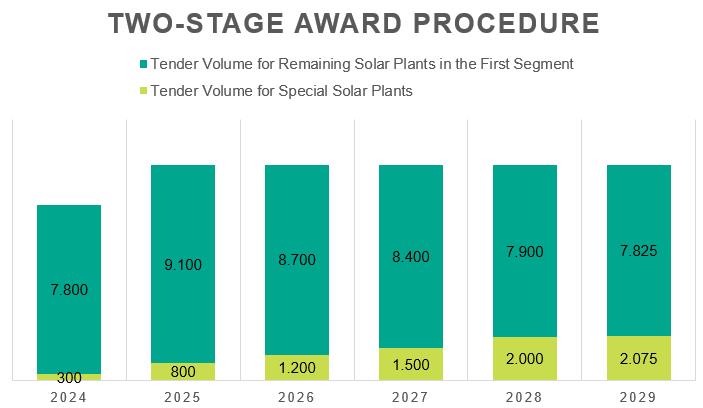
New requirements for the compatibility of ground-mounted PV plants with nature and landscape conservation
The Solar Package 1 is introducing a new minimum nature protection criteria for all subsidized ground-mounted PV plants (with the exception of special solar plants), which intendeds to improve the compatibility of ground-mounted PV plants with nature and the landscape. For this purpose, Section 37 (1a) EEG provides for a catalog of five minimum criteria from which plant operators must meet at least three.
Limitation of the covered area of the ground-mounted PV plant to a maximum of 60% of the entire project area.
Implementation of biodiversity-promoting maintenance concepts.
Ensuring passages for animals.
Implementation of site-specific biotope elements on at least 10% of the area of the ground-mounted PV plant.
Soil-conserving operation of the ground-mounted PV plant (e.g., no use of fertilizers).
The choice of the respective three criteria to be met is at the sole discretion of the plant operator. It is also possible to select those minimum criteria that are already met due to technical or structural circumstances, such as not using pesticides or fertilizers on sealed surfaces. Plant operators are required to provide regular evidence to the grid operator (every 5 years) to demonstrate compliance with those criteria that are not plant-related but operation-related. Non-compliance with the minimum nature protection criteria is sanctioned under the EEG by penalty payments in the amount of EUR 2/kW of the installed capacity per month (Section 52 (1) No. 9a, (3) No. 2 EEG).
Increase in the maximum bid amount
The Solar Package 1 increases the maximum bid amount for the EEG tender procedures for ground-mounted PV plants from the previous 20 MW to 50 MW of installed capacity per bid. Likewise, the maximum volume per bid for which a payment entitlement (Zahlungsberechtigung) can be issued to the plant operator has also been increased to 50 MW.
Disadvantaged regions: Conceptual switch from a “opt-in” to “opt-out” mechanism
Under the previous legal framework, the German federal states had to explicitly designate disadvantaged regions (benachteiligte Gebiete) within the meaning of Section 3 No. 7 EEG (areas with certain natural or site-related disadvantages) by means of a legal ordinance in the respective state territory so that financial support under the EEG was made possible for ground-mounted PV plants in these areas. This previous practice of an “opt-in” authorization for the German federal states is replaced by an “opt-out” authorization under the Solar Package I: in the future, the German federal states must explicitly exclude areas in disadvantaged regions (Section 3 No. 7 EEG) to prevent them from being included in the EEG tender procedures. This change should increase the availability of areas in disadvantaged regions for solar energy.
New regulations for rooftop PV plants (co-called solar plants of the second segment)
Reduction of the threshold for the obligation to participation in EEG tender procedures
Previously, solar plants of the second segment with an installed capacity of up to and including 1 MW were exempt from participating in EEG tender procedures. This statutory threshold has now been reduced to 750 kW by the Solar Package 1, so that in the future, all rooftop PV plants with an installed capacity of more than 750 kW are obliged to participate in the EEG tender procedure in order to receive any financial support under the EEG.
Increase of tender volumes for solar plants of the second segment
With the reduction of the threshold obligation to participate in the tendering procedure, the Solar Package 1, on the other hand, also increases the tender volumes for rooftop solar plants. In particular, a significant increase is made for the tender procedures starting in 2026 by more than doubling the tender volumes. In detail, the annual tender volume for the years 2024 to 2029 is adjusted as follows:
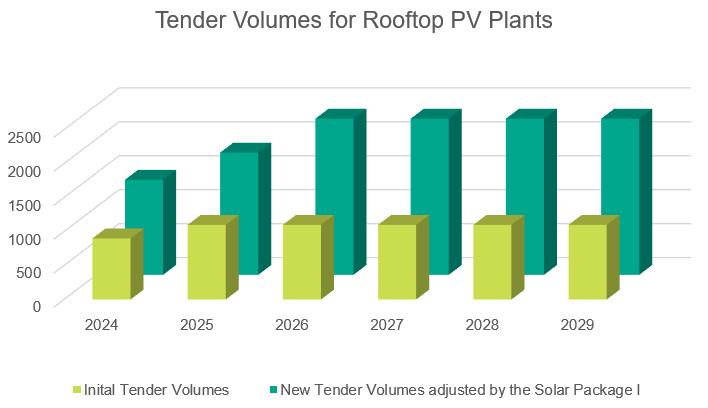
New rules for energy storage systems
Strengthening the flexibility of energy storage operation
Switch between operating modes during the year
In the past, energy storage systems faced the legal difficulty that they could not be used for mixed use (i.e., both with green electricity from RES plants and with grey electricity from the grid) while maintaining eligibility for financial support under the EEG for the temporarily stored electricity from the EEG-subsidized RES plants. This was due to the “exclusivity criterion,” which required the storage operator to use exclusively renewable electricity. In order to enable a more flexible (mixed) and thus commercially sensible use of energy storage systems, the Solar Package 1 contains the following important new rules:
- Adjustment of the exclusivity criterion: Previously, the BNetzA already argued that an energy storage system that has been used for mixed purposes meanwhile can regain the status of an energy plant pursuant to Section 3 No. 1 Hs. 2 EEG at the beginning of a new calendar year if it is again used exclusively with renewable electricity. The legislator has now adopted the calendar year-based approach to the exclusivity criterion and introduced a respective clarification in the law (Section 19 (3) EEG
- Switch between operating modes during the year: The Solar Package I further allows operators of energy storage systems to switch even during the year between the operating modes:
In which only renewable electricity is temporarily stored (“green electricity operating mode”).
In which electricity not exclusively from renewable energy sources (e.g., also grid electricity) is temporarily stored (“mixed use operating mode”). The operator of the energy storage system is entitled to switch between the operating modes on a monthly basis, whereby the minimum duration for an operating mode is 2 months in each case and a maximum of 5 switches per year are possible. With the new rules under the Solar Package 1, the entitlement of the plant operator to receive financial support under the EEG will continue to apply for the months for which the operator has selected the “green electricity operating mode” (Section 19 (3a) EEG).
- Mixed-use eligible for EEG support: The Solar Package 1 also enables even greater flexibility in storage operation and for the first time introduces regulations for mixed use of an energy storage system (i.e., for the permanent selection of the “mixed-use operating mode”) that is eligible for financial support under the EEG. In the case of mixed-use, the entitlement to receive payments under the EEG will in the future be maintained for the so-called “eligible amount of electricity” (förderfähiger Anteil) (Section 19 (3b) EEG). More detailed requirements for determining and demonstrating the “eligible amount of electricity” will be set out by the BNetzA in a new determination (Festlegung) (Section 85d EEG). The new rules under the EEG on mixed-use eligible for financial support will only enter into force, however, after the BNetzA has issued its new determination in this regard (Section 100 (34) EEG).
Strengthening the grid connection of energy storage systems
The Solar Package 1 contains significant changes for the grid connection of energy storage systems. According to the new provision in Section 17 (2a) EnWG, the statutory grid connection priority for RES plants (Section 8 (1) sentence 1 EEG) and CHP plants (Section 3 (1) sentence 1 KWKG) will not apply against energy storage systems.
With this rule, the legislator aims to ensure that energy storage systems have a priority connection to the grid (over any conventional plants) and thus creates a certain parity between energy storage systems and RES plants/CHP plants, as grid operators will no longer be allowed to give RES plants or CHP plants a priority grid connection over energy storage systems. However, this may not represent complete equality of treatment, as the legislator has not explicitly stated that the statutory grid connection priority of the EEG/KWKG should directly apply to energy storage systems. Thus, it remains to be seen how grid operators will actually implement this new regulation in practice.
Strengthening of one-site electricity supply solutions
Expansion of the tenant electricity model (Mieterstrommodell)
The scope of the tenant electricity model, previously limited to electricity produced by solar plants installed on, at, or in residential buildings and its consumption within these residential buildings (or within a residential building within the same building quarter), has been extended by the Solar Package 1 (Section 21 (3) EEG).
In the future, tenant electricity regulations will also apply to electricity from solar plants installed on, at, or in other buildings (including those used for commercial purposes) and on ancillary facilities of these buildings. The location where tenant electricity is consumed is no longer restricted to residential buildings but can also occur in commercial premises or buildings.
This new legislation will thus increase the importance of the tenant electricity model, particularly for the commercial sector. The legislator estimates that there is potential for 20,000 new tenant electricity agreements. However, according to the transitional provisions in the EEG, this expansion of the tenant electricity model only applies to new solar plants commissioned after the Solar Package 1 has entered into force (see Section 100 (24) EEG).
Introduction of the new on-site supply model „shared building supply“ (Gemeinschaftliche Gebäudeversorgung)
The Solar Package 1 introduces a new model for on-site electricity supply from solar plants, known as the “shared building supply” (Section 42b EnWG). This model aims to facilitate the supply of solar electricity produced by landlords or third parties with a solar plant for shared building supply (Gebäudestromanlage) to tenants (both residential and commercial) or other end consumers (e.g., lessees) within the building, without significant bureaucracy. The legislator estimates the practical relevance of shared building supply to be up to 80,000 buildings in Germany.
The shared building supply is a distinct on-site supply model alongside the tenant electricity model. However, unlike the tenant electricity model, the new shared building supply does not entail the obligation of the plant operator to secure the entire supply of residual electricity to end consumers (which must instead be obtained by the end consumers themselves). Additionally, the operator of the rooftop plant is not subject to any supplier obligations under the EnWG (e.g., billing and information obligations under Sections 40 and 40b EnWG).
Plant operators of solar plants for shared building supply must enter into a “building electricity usage agreement” (Gebäudestromnutzungsvertrag) with the end consumers in the building, the detailed contents of which are regulated by Section 42b (2) EnWG.
Acceleration of grid connections
Statutory right for the installation of cables (Section 11a EEG)
For the realization of grid connection cables, Solar Package 1 establishes a new obligation for landowners to tolerate such installations. According to new Section 11a EEG, owners and other beneficiaries of properties owned by public landowners are now obliged to tolerate the laying, installation, maintenance/replacement, and operation of electrical cables, control and communication lines, and other facilities for connecting RES plants, energy storage systems, or plants for the production or storage of green hydrogen to the public grid.
The obligation to tolerate such uses not only applies to public land but also to public roads. There are exceptions to the right to lay lines if this usage conflicts with national and alliance defense interests. For the usage of the land, a one-off payment of 5% of the market value of the respective area of the protective strip used must be paid to the landowners.
While the new obligation to tolerate such uses for grid connection is important for project developments as it facilitates the process of securing land, its scope of application was considerably reduced during the legislative procedures by limiting the obligation to publicly owned land only. The securing of areas of private land for grid connections, which often proves time-consuming in practice, therefore remains unaffected by this new legal regulation and will still be required in the future.
Statutory right for crossing and overturning areas required for onshore wind projects (Section 11b EEG)
Similar to the obligation to tolerate the installation of electricity cables (as mentioned earlier), the Solar Package 1 introduces an obligation to tolerate in relation to the realization of onshore wind projects. According to Section 11b EEG, owners and other authorized users of land are required to tolerate the crossing and overturning of the land required for the construction and dismantling of wind turbines. To compensate for the crossing, a payment of EUR 28 per month per hectare, along with the obligation to restore the land to its original condition, is provided for by law; overturning, on the other hand, is free of charge. Again, the obligation to tolerate only applies to public landowners.
Transparency and standardization of the Technical Connection Conditions (Technische Anschlussbedingungen – “TAB”)
The Solar Package 1 includes improvements to the technical regulations for grid connections:
Publication of the TAB: Since January 1, 2023, German distribution grid operators have been obliged to operate a joint internet platform (www.vnbdigital.de) and must now also publish the applicable Technical Connection Conditions (TAB) on this platform as of January 1, 2025, ensuring access to the TAB, explanatory notes, and possible amendments for everyone. These new transparency requirements aim to simplify project developments and grid connection projects by enabling quick access to the relevant TAB and identification of any special characteristics for grid connection realization.
Standardization of TAB: The new regulation of Section 19 (1a) EnWG introduces statutory requirements for the permissible content of TAB to standardize them, especially considering the current 850 different distribution system operators in Germany. This standardization aims to reduce the bureaucracy associated with grid connection projects.
About the authors

Maximilian Uibeleisen
Dr. Maximilian Uibeleisen is a partner at McDermott Will & Emery’s German energy & infrastructure team and a member of the firm’s global energy and project finance team.
Maximilian focuses his practice on clients working around energy and infrastructure, with particular experience in advising corporates and financial investors with regard to the development and acquisition and sale of energy and infrastructure assets.
He has a particular focus on the renewable energy sector, where he has advised for almost 20 years on a large number of project developments and transactions relating to all different kinds of renewables facilities (including offshore and onshore wind, solar, biomass, geothermal) as well as energy transition (e.g. green hydrogen and battery storage).
Next to this work in the energy sector, Maximilian frequently advises in other infrastructure sectors, including in the German motorway PPP sector, the chemicals sector and in relation to digital infrastructure assets.
He studied law at the universities of Tübingen, Münster and Berlin (Dr. iur.) and holds a master degree (LL.M.) from Nottingham Trent University. He was admitted to the German bar in 2006. He is the author of various German and international publications and is co-author of one of the leading German commentaries on energy law.

Simon Groneberg
Dr. Simon Groneberg is a counsel at McDermott Will & Emery’s German energy & infrastructure team and a member of the firm’s global energy and project finance team.
Simon specializes on advising national and international clients on energy, hydrogen and infrastructure projects as well as regulatory matters. He has comprehensive experience in advising on project developments as well as M&A transactions in these sectors.
He has particular experience with renewable energy projects (e.g. offshore and onshore wind farms and solar farms) and energy storage projects. Simon advised on a number of project developments and transaction in the renewable sector focusing on all regulatory and public law aspects in relation to the permitting, grid connection and remuneration situation of renewable energy projects. Simon has experience in negotiating of project related agreements like direct marketing agreements or power purchase agreements (PPAs). He also regularly advises clients on other matters of the energy transition and the implementation of net-zero strategies of companies.
